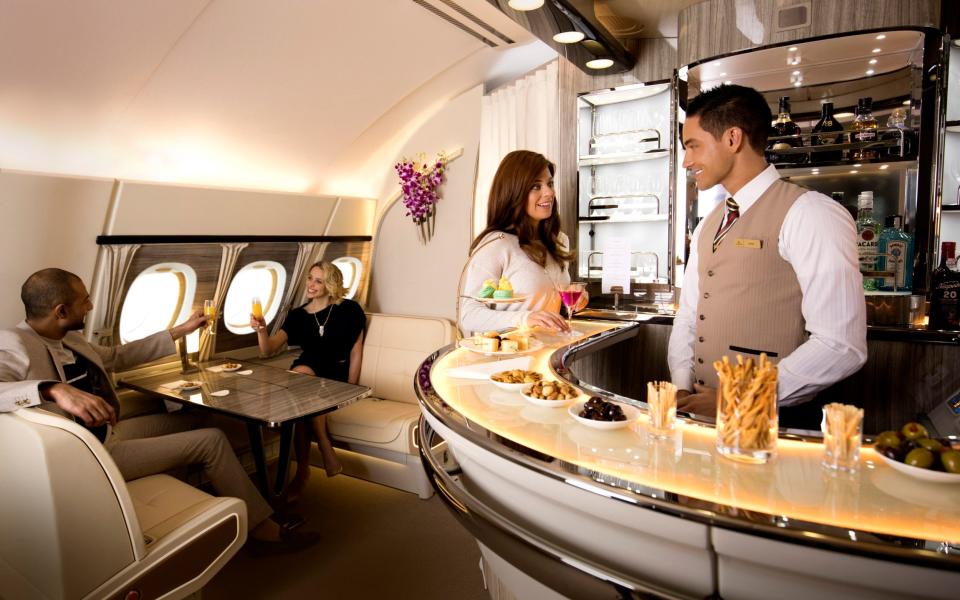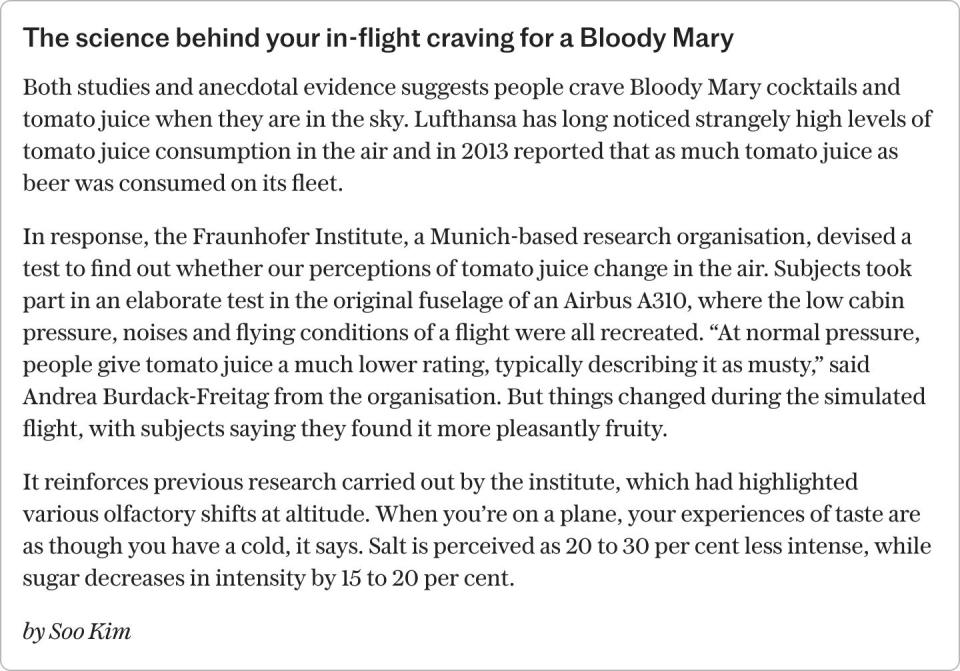The curious history of in-flight boozing

- Oops!Something went wrong.Please try again later.
For me, a holiday begins with that first sip of an ice-cold G&T as you soar above the clouds. There’s a special kind of release you feel at 35,000 feet, when slightly inebriated, that makes the bother of the airport and the stress of holiday planning fade into nothingness. The holiday has truly begun.
And while the standards on budget airlines might not quite hit the heights – last week, a passenger on a Ryanair flight ordered a “Dublin Lemonade” from the airline’s new “ready-to-drink” cocktail menu, and was promptly served the individual ingredients to make the drink himself – in premium classes, of course, the drinks choices are flying high.
Passengers flying first class from Dubai to the Americas with Emirates this summer can enjoy a complimentary glass of Dom Pérignon Rosé 2008, a supremely rare bottling and an exclusive for Emirates. Virgin Atlantic’s new cocktail menu, meanwhile, launched this spring, brings destination-inspired creations to the upper-class cabin. Customers on flights to the US can enjoy the “American Dream”, a Patron Silver tequila mixed with a grapefruit soda and a squeeze of lime, crafted to order.
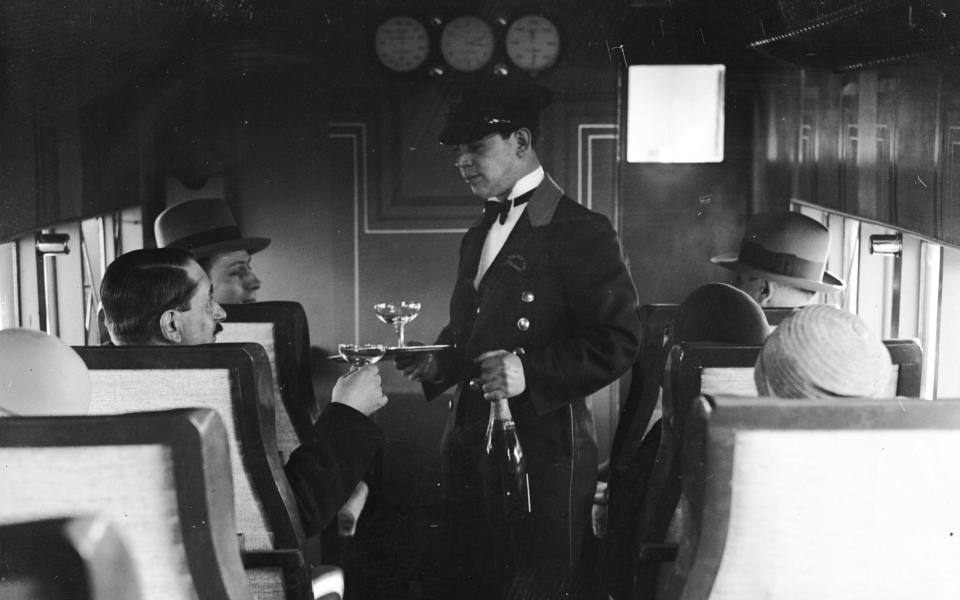
So where does the story of in-flight booze begin? On a hot-air balloon. The first ever airborne alcoholic drink was served in December 1783, according to Richard Foss, author of Food in the Air and Space: The Surprising History of Food and Drink in the Skies. Physicist Jacques Charles and his fellow passenger Nicholas-Louis Robert popped a bottle of champagne to toast the ascent of the balloon as it began its two-and-a-half-hour journey. That first glass of fizz set a precedent for the era of glamorous air travel to follow.
A dry beginning
While commercial airlines first came into being in the 1920s and 1930s, the Prohibition era in the United States meant that alcohol wasn’t served on US carriers until the 1940s, with Pan Am and National Airlines leading the charge. The advent of pressurised aircraft began with the Boeing 307 Stratoliner, which allowed 33 passengers to travel at higher altitudes in relative comfort. Larger craft meant more space for cabin crew, and the addition of galley kitchens made serving alcohol easier.
Sky-high cocktails
While Pan Am was the first in the US to serve an in-flight alcoholic beverage, it was National Airlines which paved the way for the future of alcohol on board, serving it on flights from New York to Miami once it was outside US airspace. According to Jack El-Hai, author of Non-Stop: A Turbulent History of Northwest Airlines, it was Northwest, which dissolved after it merged with Delta in 2008, that took things seriously, publishing pamphlets entitled The Story of Distilled Beverages to educate staff on the art of pouring drinks. To save space by not having to carry multiple mixers, the airline famously served martinis, scotch, manhattans and whiskey on all its domestic flights.
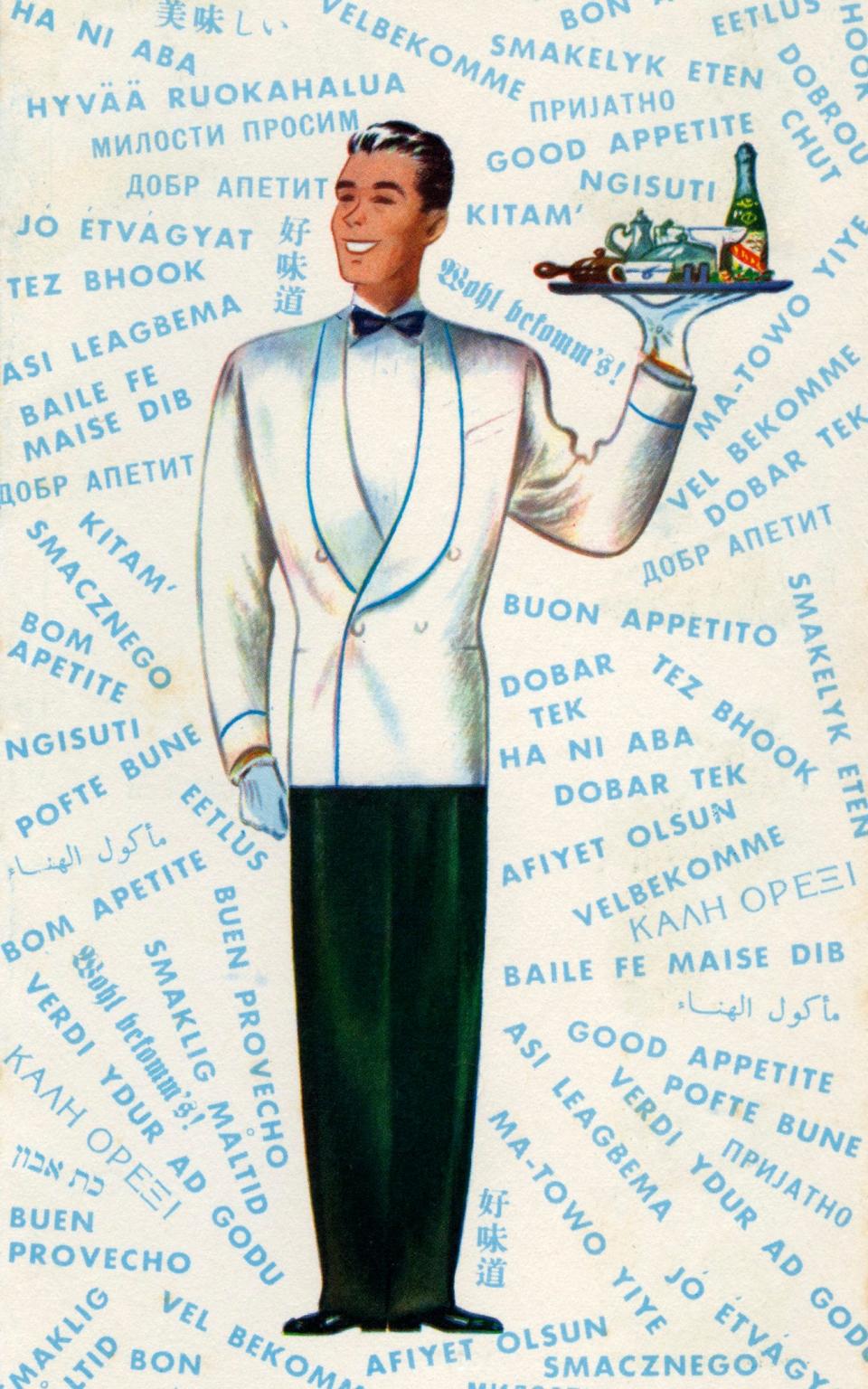
Champagne service
Until 1978, the Civil Aeronautics Board controlled ticket fares in the US, and so the best way for airlines to make money was to charge extra for appealing add-ons like three-course meals and unlimited alcohol. Competition between airlines subsequently ramped up, and with the absence of any in-flight entertainment, the race to get bums on seats meant luring customers with free drinks and snacks. Delta’s Royal Service featured free champagne, followed by canapés and cocktails and, should you ask for more, mini bottles of your favourite spirits.
Meanwhile, in Britain, BEA (British European Airways) relaunched the pre-war Silver Wing service between London Heathrow and Paris in 1952. The inaugural flight’s drink offering included champagne served in plastic glasses – a novelty at the time.
The golden age of in-flight drinking
It was the introduction though of the Boeing 747 to Pan Am’s fleet in 1970 that really got the party started. These jumbo jets were big enough to fit in bars and lounges and the race was on to offer the most exclusive, wacky experience. Menus with Pan Am were vast, including a wide range of fine wines and meals served with proper cutlery.
Continental Airlines (now United Airlines after a merger in 2012) was known to advertise not one but two lounges and a pub on board its Boeing 747s, as a marketing postcard from the 1970s states: “The Polynesian Pub, Continental’s new Coach lounge… a fun place to relax, eat fresh-popped popcorn, drink cold beer or cocktails and meet friendly people.”
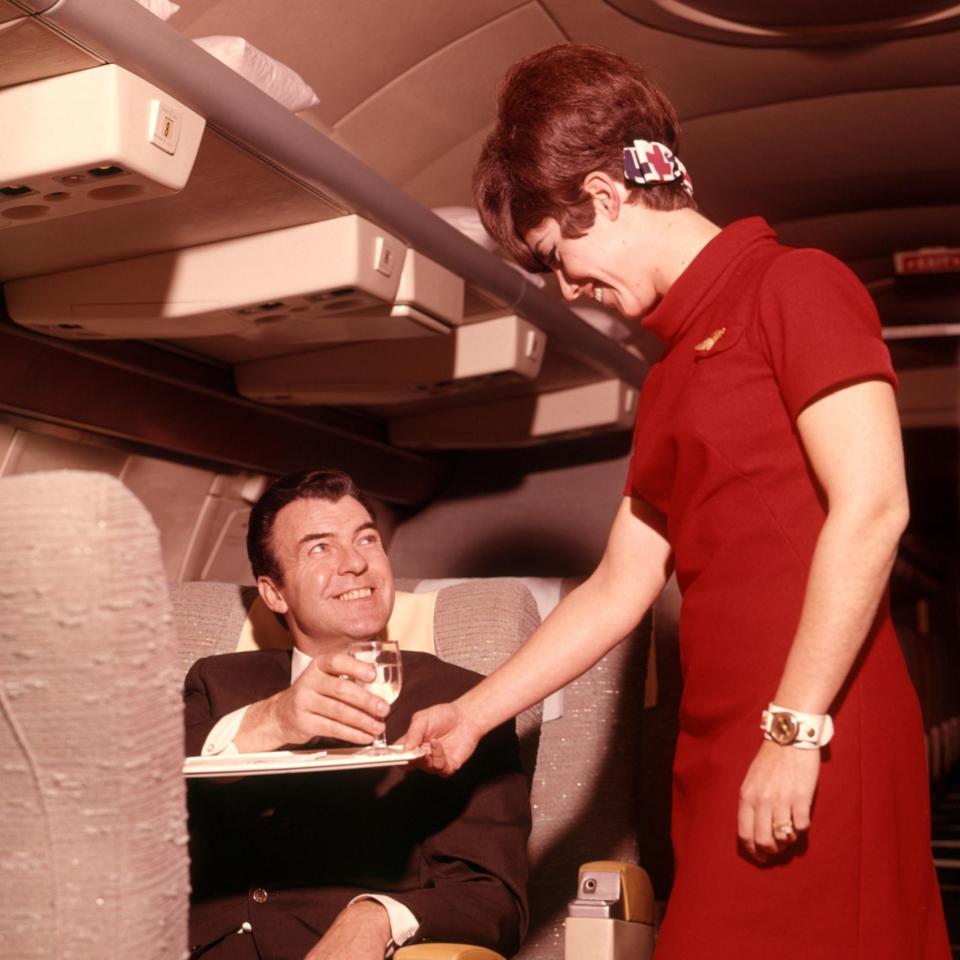
Qantas’s Captain Cook-themed Lounge followed in 1971, seating 15 and offering a stand-up bar. And let’s not forget American Airlines’ iconic Piano Bar. To compete, New York-based Mohawk Airlines decorated their ageing DC-3 like vintage railway cars, with stewards dressed as dance hall ladies dishing out free beer, cigarettes and pretzels to passengers.
The British approach in the late 1970s was, naturally, more restrained, and BA’s first- and business-class passengers were treated to in-flight catering inspired by the reign of Queen Elizabeth I (from 1558 to 1603). A Posset cocktail – popular some 400 years previously, was a concoction made by mixing hot milk, spices and liqueurs.
End of an era
But with the introduction of economy class seats on transatlantic flights for the first time, the exclusive feel and glamour of air travel began to slowly fade. Airlines were required to limit their economy class food and drink offerings to coffee, tea, mineral water and “simple, cold and inexpensive” sandwiches.
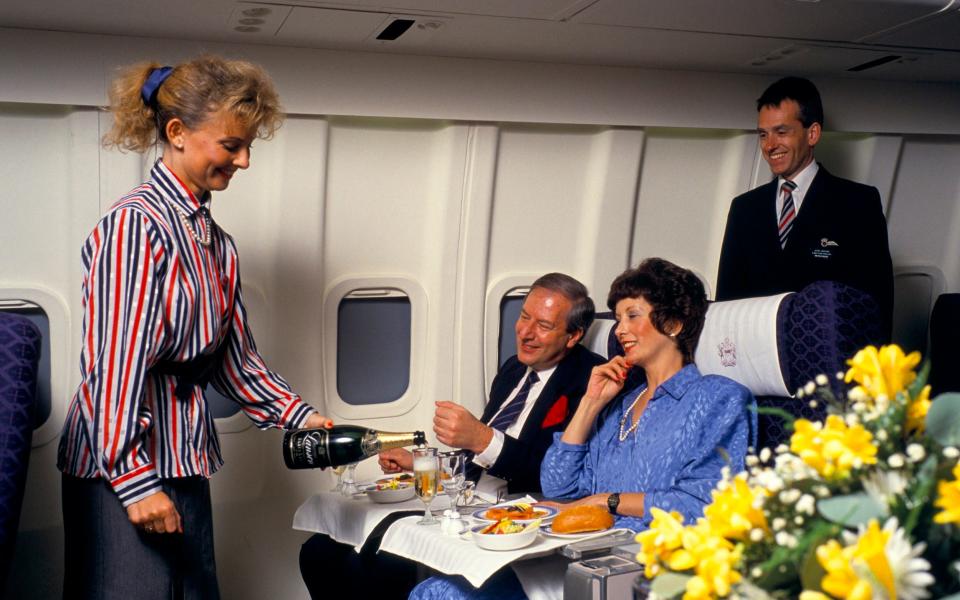
In January 2017, BA announced that it would no longer be offering free food and drink on any short-haul services, a move described by The Telegraph’s Nick Trend as the “end of an era”. At the time, Trend suggested that there is no longer any difference between the airline and the likes of easyJet or Ryanair. “Charging short-haul economy class passengers for drinks and sandwiches removes the final distinction between BA and its low-cost rivals.”
The glamorous age of drinking on planes still exists – in business and first class. And, if it’s a G&T you crave, most airlines are happy to oblige with a slice (though maybe not ice) as standard.
A word of warning
While it’s an undisputed fact that alcohol is bad for your health, a recent study has found that drinking and falling asleep on a plane could actually prove deadly for those with pre-existing heart conditions. “I would advise people with heart or lung conditions to avoid drinking alcohol on planes,” said Dr Eva-Maria Elmenhorst, of the German Aerospace Centre in Cologne, in a recent Telegraph article. In the new study, an experiment was carried out on 48 people to assess the effects of alcohol and sleep on people in a pressurised cabin, and showed that alcohol did have a significant negative impact on heart rate and oxygen saturation levels.
“It is important to remember that this study is based on a small sample of people and the results should not be translated to the population as a whole,” said Ian Hamilton, a senior lecturer in addiction and mental health at the University of York. “Most people who drink and fly won’t experience any significant health problems. That said, we don’t know what the long term effects of combining alcohol with flights is. Given the reduced oxygen levels it is possible that physical risks could accumulate to a more serious health issue.”
Perhaps more concerning is what Hamilton calls “the ‘BOGOF’ effect” of drinking alcohol when on a plane. “Consuming one unit feels like two and this could really catch people out.”
